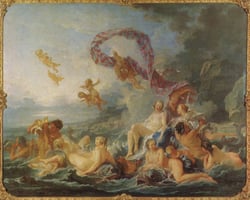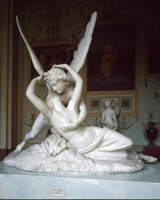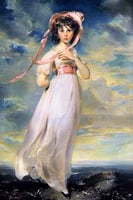18th-century art was a period of great creativity and innovation. This period of art was heavily...
Celebrating the Life and Legacy of Angelica Kauffmann: Pioneering Painter, Writer, and Educator
Angelica Kauffmann (1741-1807) was a Swiss-born artist and one of the most renowned female painters of the 18th century. She was a versatile artist and a prominent figure in the European art world, with a career spanning over five decades. She is most known for her classical and neoclassical paintings, including frescoes, portraits, allegories, and history paintings.
Kauffman was born in Chur, Switzerland, and received her artistic training from her father, Johann Joseph Kauffman, a painter and architect who encouraged her talent. At the age of eighteen, she moved to Italy and studied painting in Rome, where she was influenced by the classicism of the Italian Renaissance.
She was also strongly influenced by the work of the Venetian artist, Giambattista Tiepolo. In 1764, Kauffman moved to London and quickly became a popular portrait painter; her paintings were in high demand by wealthy patrons. She was also a founding member of the Royal Academy of Arts, the first woman to be elected to the Academy. Over the next few decades, Kauffman continued to receive many commissions for her paintings, including portraits of prominent figures such as Marie Antoinette, George Washington, and King George III. Kauffmann was also highly acclaimed for her frescoes and large-scale history paintings, which depicted scenes from classical mythology and religious events.
Her most famous work, The Death of Cleopatra, was commissioned for the Royal Palace in Madrid in 1785. Kauffmann’s works were characterized by their elegant composition and delicate use of color, as well as her innovative use of light and shadow. Kauffmann’s success was not without its challenges; in the 1770s she was falsely accused of adultery and was briefly imprisoned. Despite this setback, she continued to produce art throughout her career, and her works were exhibited in galleries and museums in Europe and the United States. Today, Angelica Kauffman is celebrated as one of the most influential female artists of the 18th century. Her works continue to be admired for their timeless beauty, and her legacy as a pioneering female artist lives on.




